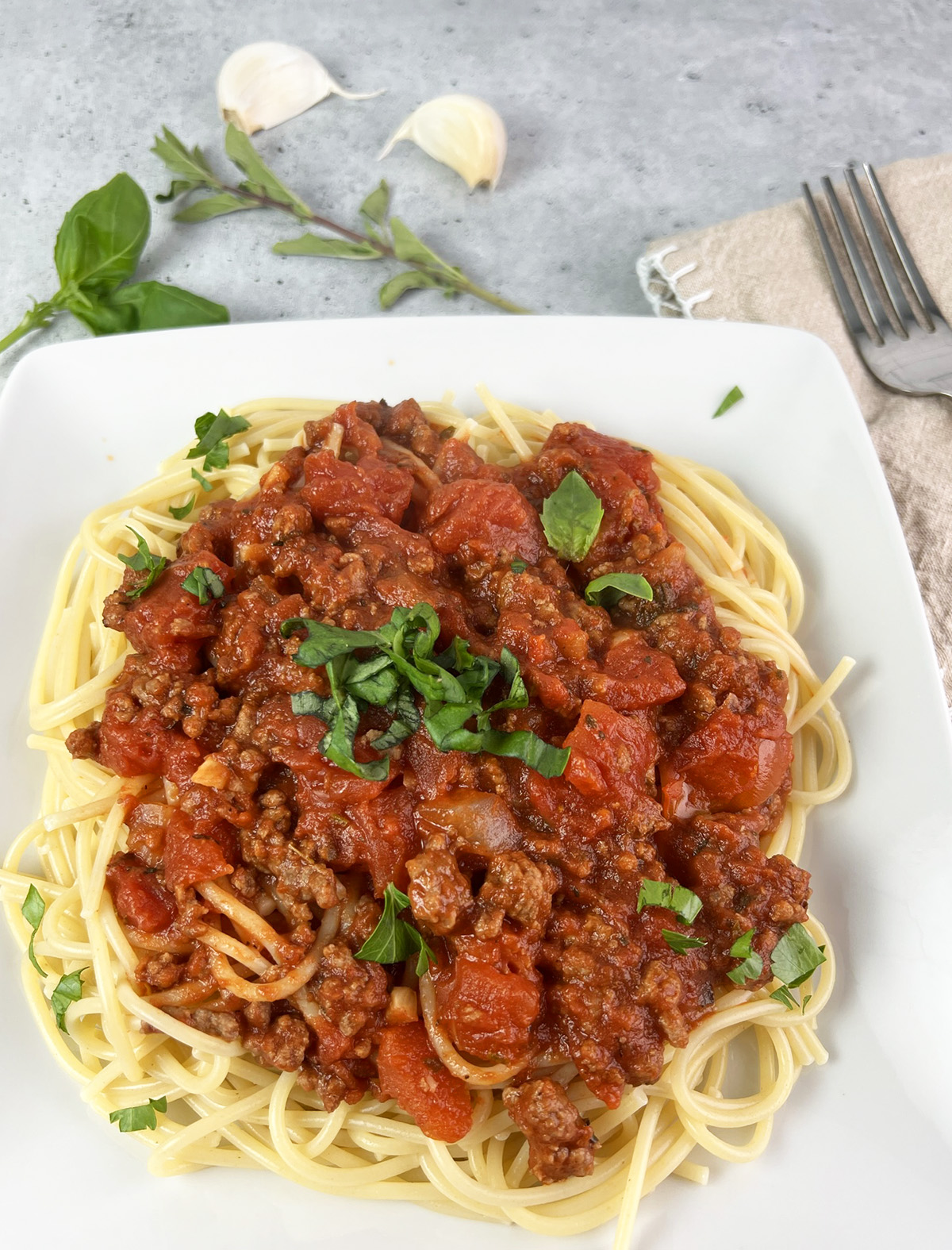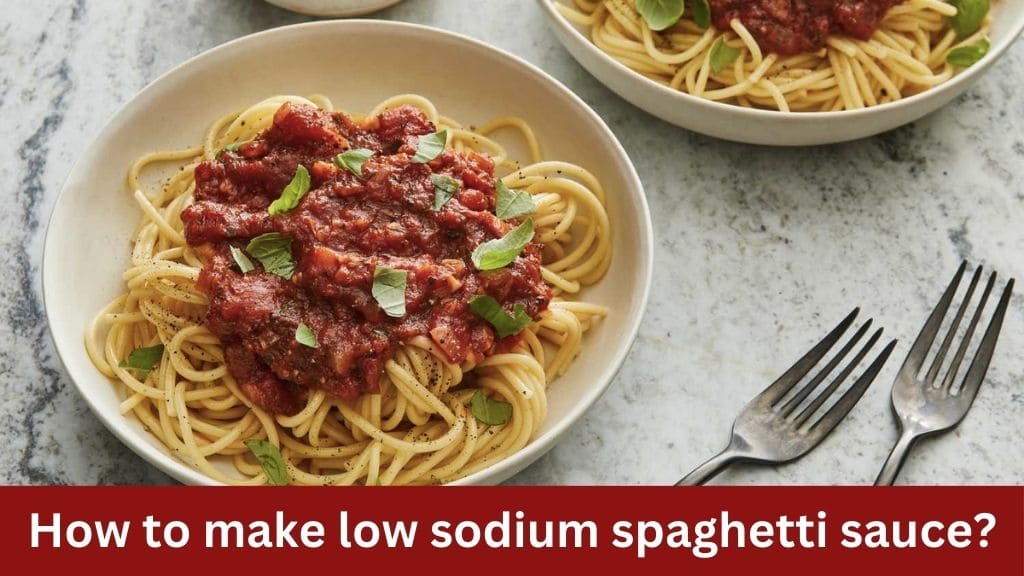In today’s health-conscious world, many people are looking for ways to reduce their sodium intake without sacrificing flavor. One way to do this is by making homemade low sodium spaghetti sauce. In this blog post, we’ll explore why reducing sodium is important, the benefits of making your own sauce, and provide a step-by-step guide to creating a delicious low sodium spaghetti sauce at home.
Why Reduce Sodium?
:max_bytes(150000):strip_icc()/Easyspaghettiwithtomatosauce_11715_DDMFS_1x2_2425-c67720e4ea884f22a852f0bb84a87a80.jpg)
Sodium is a mineral that is essential for our bodies to function properly, but consuming too much can lead to health problems such as high blood pressure, heart disease, and stroke. The average American consumes far more sodium than is recommended, largely due to processed and packaged foods which are often high in sodium.
Reducing sodium intake can help lower blood pressure and reduce the risk of developing these health issues. By making your own spaghetti sauce with low sodium ingredients, you can take control of your sodium intake and enjoy a healthier meal without sacrificing taste.
Benefits of Homemade Spaghetti Sauce

Making your own spaghetti sauce at home has numerous benefits, including:
- Control Over Ingredients: When you make your own sauce, you have control over the ingredients you use. You can choose low sodium versions of canned tomatoes, tomato paste, and other ingredients, ensuring that your sauce is as healthy as possible.
- Freshness and Flavor: Homemade sauce often tastes fresher and more flavorful than store-bought varieties. By using fresh herbs and spices, you can enhance the taste of your sauce without relying on salt for flavor.
- Customization: Making your own sauce allows you to customize it to suit your taste preferences. You can adjust the amount of herbs and spices, add vegetables or meat, and experiment with different flavor combinations to create a sauce that is perfect for you.
- Health Benefits: By using low sodium ingredients and fresh herbs, homemade spaghetti sauce can be a healthier option than store-bought varieties. It contains fewer preservatives and additives, making it a more natural and nutritious choice.
Step-by-Step Guide

Now that we’ve covered the benefits of making your own low sodium spaghetti sauce, let’s dive into the step-by-step process of creating this delicious dish at home.
Ingredients
- 1 lb lean ground beef
- 1 28oz can of no-salt added diced tomatoes
- 1 14.5oz can no-salt added tomato sauce
- 1 6oz can of no-salt added tomato paste
- ⅓ cup red wine vinegar
- ½ medium onion, chopped
- 3 cloves garlic, minced
- 1 tablespoon fresh oregano
- 1 tablespoon fresh basil
- 1 tablespoon Italian seasoning (salt-free)
- ½ teaspoon fresh ground black pepper
Instructions
- Brown the Ground Beef:
- Browning the ground beef is the first step in creating the base of your sauce. This process involves cooking the beef in a pot or Dutch oven over medium heat until it’s partially cooked.
- As the beef cooks, it releases juices and begins to brown, adding flavor to the sauce.
- Adding chopped onions and minced garlic to the browning beef enhances the flavor profile of the sauce, creating a savory base.
- Add Remaining Ingredients:
- Once the ground beef is fully browned and the onions and garlic are softened and fragrant, it’s time to add the remaining ingredients.
- Start by adding the diced tomatoes, tomato sauce, and tomato paste to the pot. These canned tomato products provide the bulk of the sauce’s flavor and texture.
- Red wine vinegar adds acidity and brightness to the sauce, balancing out the richness of the tomatoes and beef.
- Fresh herbs like oregano and basil contribute fresh, aromatic notes to the sauce, elevating its flavor profile. Italian seasoning adds additional depth and complexity to the seasoning.
- Black pepper adds a hint of heat and spice, complementing the other flavors in the sauce.
- Simmer the Sauce:
- After all the ingredients have been added to the pot, reduce the heat to low and cover the pot with a lid.
- Allowing the sauce to simmer gently over low heat for about 30 minutes allows the flavors to meld together and develop into a cohesive sauce.
- Stirring the sauce occasionally during the simmering process ensures that it cooks evenly and prevents it from sticking to the bottom of the pot.
- The simmering process also allows the sauce to thicken slightly as excess moisture evaporates, resulting in a rich and flavorful sauce.
- Serve and Enjoy:
- Once the sauce has simmered to perfection, it’s time to serve and enjoy!
- Cook your favorite pasta according to package instructions, opting for varieties cooked without salt to keep the sodium content of your meal low.
- Ladle the sauce over the cooked pasta, ensuring that each strand is generously coated with sauce.
- Garnish the sauce with additional fresh herbs such as basil or oregano for a burst of freshness and color.
- Ser
Additional Tips

- Meatless Option:
- If you prefer a vegetarian or meatless sauce, you can omit the ground beef altogether.
- Instead, start by sautéing the onions and garlic in a bit of olive oil over medium heat until they become translucent and fragrant.
- Skipping the meat not only reduces the sodium content of the sauce but also makes it suitable for vegetarian or vegan diets.
- This option allows you to enjoy the rich flavors of the tomatoes and herbs without the addition of meat.
- Storage and Freezing:
- Leftover sauce can be stored in an airtight container in the refrigerator for up to five days.
- To freeze the sauce for longer-term storage, allow it to cool completely before transferring it to freezer-safe containers or resealable bags.
- Be sure to label the containers with the date and contents for easy identification.
- Frozen sauce can be stored in the freezer for up to four months, allowing you to enjoy homemade spaghetti sauce whenever you crave it.
- Experimentation with Ingredients:
- Feel free to experiment with the recipe by adding additional vegetables or ingredients to customize the sauce to your liking.
- Consider adding diced bell peppers, mushrooms, or zucchini to add extra flavor, texture, and nutrition to the sauce.
- You can also adjust the quantities of herbs and spices to suit your taste preferences.
- Don’t be afraid to get creative and try different combinations of ingredients to create your own signature spaghetti sauce recipe.
- Serving Suggestions:
- While spaghetti is a classic choice for serving with spaghetti sauce, don’t hesitate to try other types of pasta as well.
- Choose whole wheat or gluten-free pasta for added nutritional benefits or dietary restrictions.
- Serve the sauce alongside garlic bread or a side salad for a complete and satisfying meal.
- Leftover sauce can also be used as a topping for homemade pizza or as a base for other Italian-inspired dishes such as lasagna or baked ziti.
Conclusion
Making your own low sodium spaghetti sauce at home is a simple and satisfying way to enjoy a healthier version of this classic Italian dish. By using fresh ingredients and minimizing the use of salt, you can create a sauce that is not only delicious but also better for your overall health. So why not give it a try? Your taste buds and your body will thank you!





